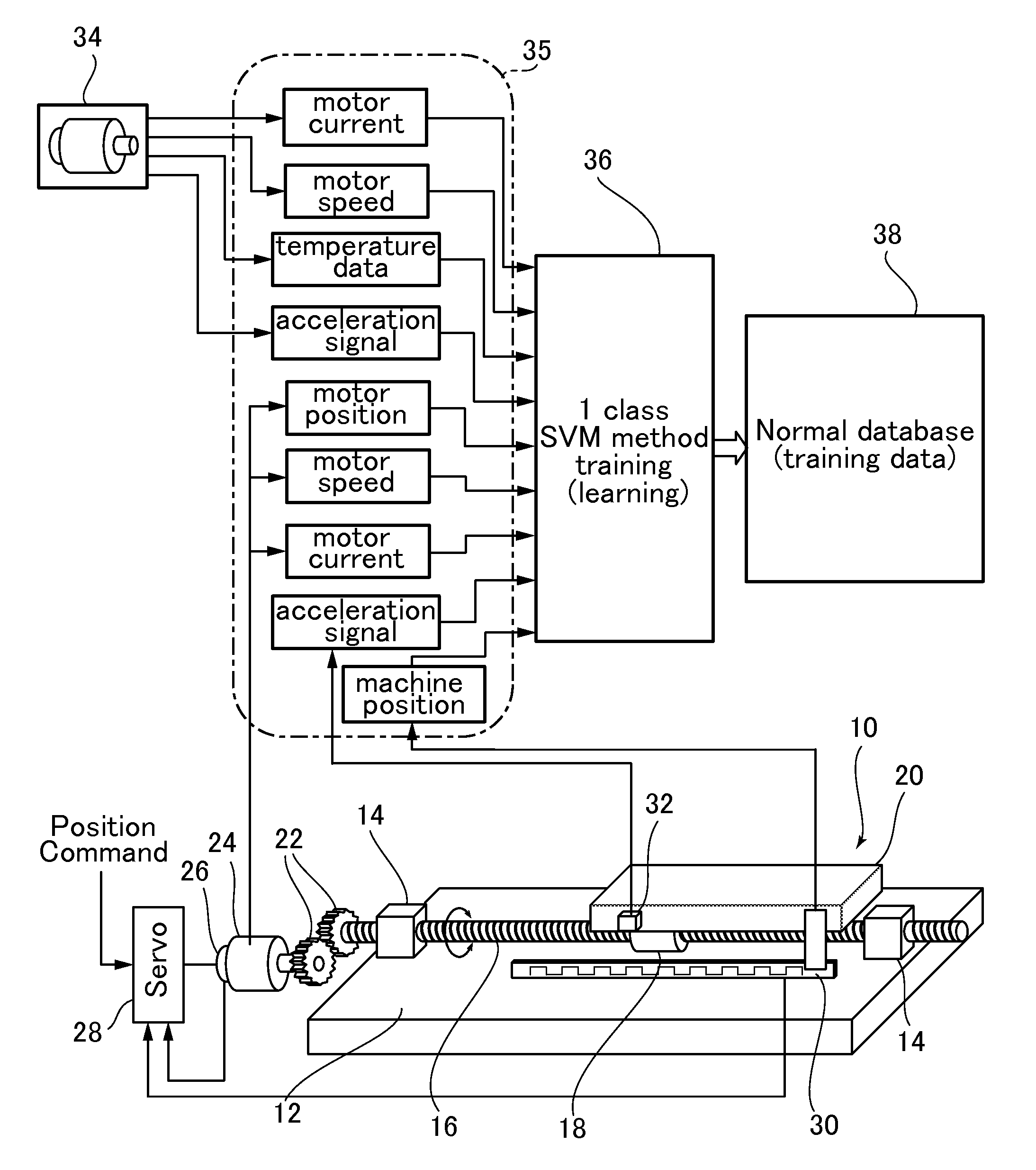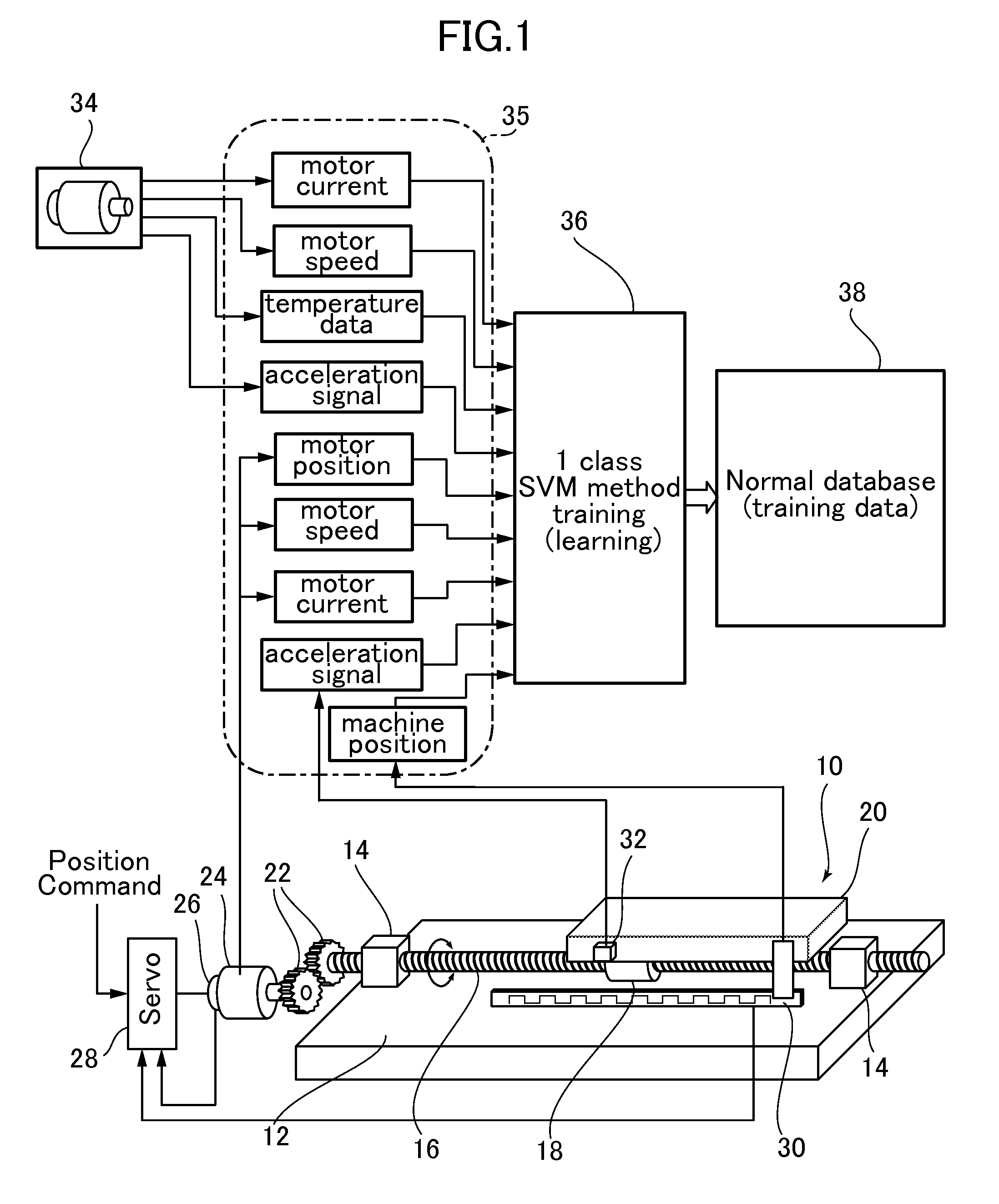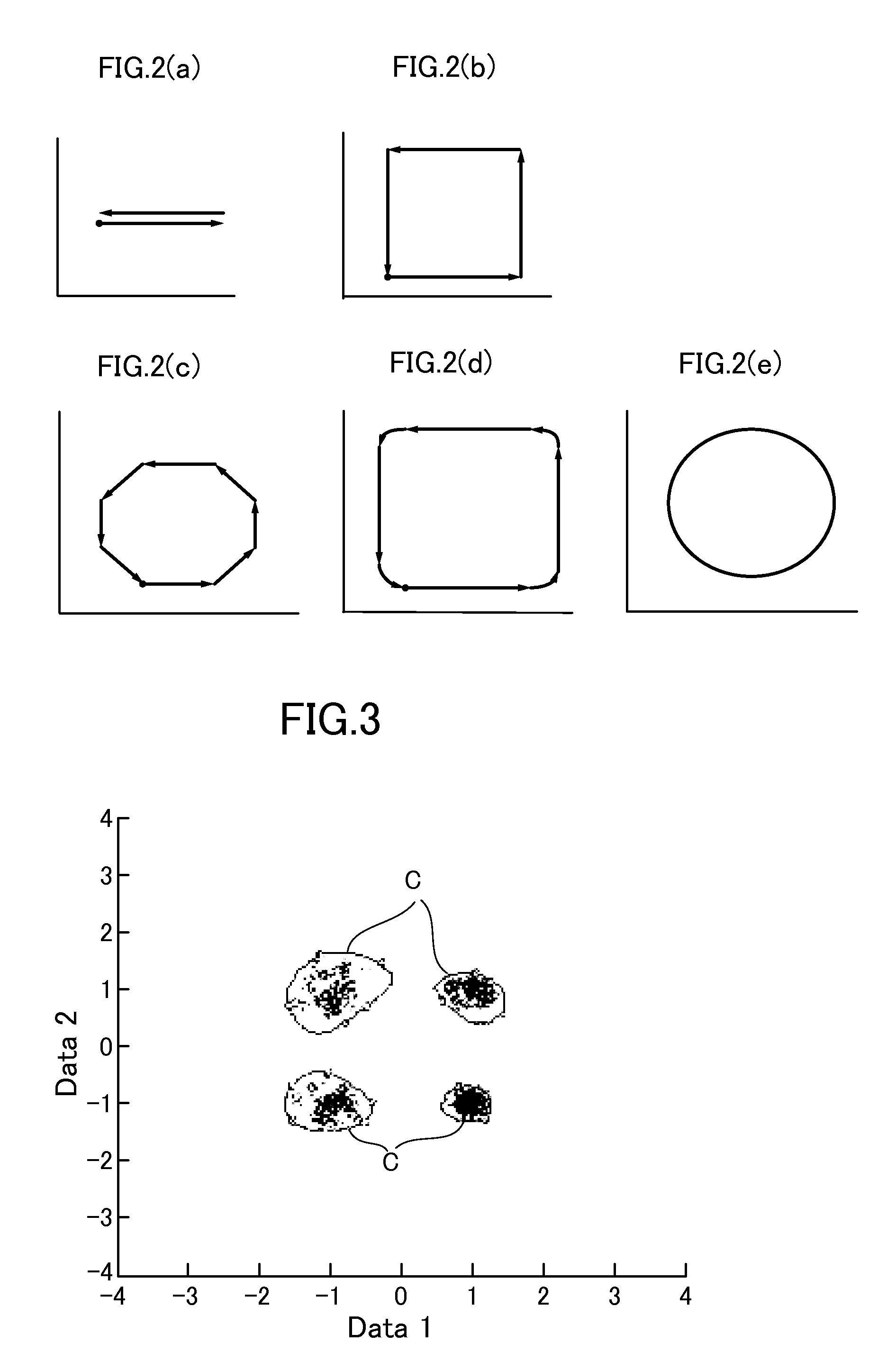Machine tool diagnostic method and system
a technology of machine tools and diagnostic methods, applied in the direction of computer control, program control, instruments, etc., can solve the problems of machine tool time-related changes and mechanical damage, wear and degradation, and prolong the downtime of machine tools, so as to prevent the reduction of diagnostic accuracy
- Summary
- Abstract
- Description
- Claims
- Application Information
AI Technical Summary
Benefits of technology
Problems solved by technology
Method used
Image
Examples
second embodiment
[0075]Next, referring to FIG. 5, we explain a
[0076]In the second embodiment, an operating pattern for machining mass produced workpieces such as screws or gears is adopted as the operating pattern at the time when machine tool training data and test data are acquired. Therefore in the second embodiment a mapping space normal area is generated in normal database 52, based on training data acquired during operation in a mass-production workpiece machining operation pattern.
[0077]In normal database 52, 1 class SVM method mapping space information, in which normal area C has been generated by training when machining a mass produced machined product, is stored in normal database 38.
[0078]In the second embodiment, the test data also employs the same operating pattern used at the time of machining mass produced workpieces. In the same manner as the first embodiment, test data is input into the SVM discriminator and a diagnostic result (f(x)) value is computed by diagnostic unit 51.
[0079]A ...
third embodiment
[0082]Next, referring to FIG. 6, we explain a
[0083]FIG. 6 is an explanatory diagram of a failure timing prediction based on diagnostic results; the horizontal axi s shows time and the vertical axi s shows SVM discriminator diagnostic result (f(x)) values. These diagnostic result (f(x)) value correspond to the position of test data in the mapping space, such as that shown in FIG. 3. The more the diagnostic result (f(x)) value approaches zero from a positive value, the more the test data position approaches, from inside normal area C in FIG. 3, the boundary line between normal area C and the abnormal area. When the training data (f(x)) value is zero, the test data is positioned on the boundary line. Moreover, if the value of training data (f(x)) is negative, the test data is position outside normal area C.
[0084]The FIG. 6 curve I connects with solid lines a plot of the diagnostic results (f(x)) when multiple iterations of test data are input to an SVM discriminator from machine tool s...
fifth embodiment
[0092]Next, referring to FIG. 8, we explain a
[0093]In the FIG. 5 embodiment, test data is used as additional training data to generate a new normal area in a new mapping space of the 1 class support vector machine method. Information for the 1 class SVM method mapping space in which this new normal area is generated is stored in the latest normal database 82.
[0094]Note that updating of this latest database 82 by the addition of training data can be done regularly or irregularly.
[0095]Also, initial training information based on training data at time of shipment is left in the time-of-shipment normal database 85.
PUM
 Login to View More
Login to View More Abstract
Description
Claims
Application Information
 Login to View More
Login to View More - R&D
- Intellectual Property
- Life Sciences
- Materials
- Tech Scout
- Unparalleled Data Quality
- Higher Quality Content
- 60% Fewer Hallucinations
Browse by: Latest US Patents, China's latest patents, Technical Efficacy Thesaurus, Application Domain, Technology Topic, Popular Technical Reports.
© 2025 PatSnap. All rights reserved.Legal|Privacy policy|Modern Slavery Act Transparency Statement|Sitemap|About US| Contact US: help@patsnap.com



